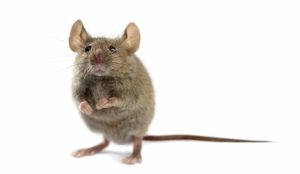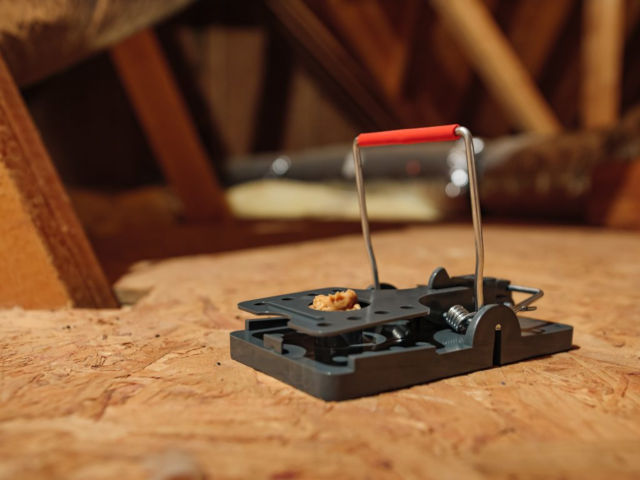Mice are tiny mammals with incisors that grow throughout their life and even after death, like human hair and nails. Mice come in a broad range of species, wild mice are exactly that, wild, and do not rely on humans at all for food. However, they will in cold weather, make use of human homes for warmth, often using their incredible climbing abilities to enter the attic of a house directly. The attic, especially an unfinished attic is a place the inhabitants of a home rarely go and so it is a great place to hide from humans. That is how most mice live in human homes without being noticed. They hide, they avoid humans and they only come out when it’s dark and quiet. They can feel and hear very soft sounds and vibrations so if you are wondering if you have mice it will be very hard to catch one visibly. It’s easier to see what they have left. The easiest thing to use to identify the presence of mice is their feces and possibly the smell of their urine. The feces is tiny, they look like specks of dirt. They will be dark brown or black and soft if they are fresh, they will change colour often turning white after getting old and dry. It is very important to wear gloves and a face mask or respirator while cleaning mouse feces and to make sure you do not disturb it too much. The general recommendation for cleaning the mouse feces is to either use a vacuum cleaner or to coat the feces in disinfectant before sweeping it up and then mopping the area. Whatever you do, do not sweep it. The feces can come apart and particles can fill the air entering your lungs and causing Hantavirus which is a severe respiratory illness that can be fatal. However, that virus has not been prevalent in North America for some time.
If you find
The best method of killing mice is poison. Domestic or commercial grade rodenticide is the favoured poison of both licensed exterminators and DIY’ers who cant to get rid of the infestation without having to pay the big-ticket price of a professional. That being said the content of the active ingredient in the domestic version of the poison is very low compared to the commercial-grade poison mainly because professionals use tamper-proof bait stations to store them in. The benefit of this poison is that it functions through anticoagulation which causes internal bleeding. This does not cause the mouse to bleed on the outside but instead to become very dehydrated. This kills them over two to seven days from repeated feeding and results in a desiccated puffball that is no longer a biological danger and has no smell. They are safe to die in the walls of the house and is one of the most effective permanent, long term solutions to mice.
If you are worried about using poison you can always use snap traps. The factor to take into account is that snap traps can only kill one mouse at a time. It must then either be thrown away with the mouse, which can be wasteful and expensive or the mouse must be removed from the trap and the trap must be cleaned. This is because mice can smell each other’s scent on objects and if they smell the scent of death, blood and other warning signs they will avoid the device. Use either new or clean traps and make sure to bait them properly.
Mice are wild animals even if they tend to invade human homes. They eat nuts and berries in the wild as well as some insects so the best baits are things with high-fat content. Bacon, peanut butter, anything that smells good. Marshmallow is one of their favourites. You should be careful to but only a small amount of bate, too much may allow the mouse to take it without activating the trap or will look odd in the environment and make the mouse paranoid. Either way, they will not eat the bait or get caught in the trap.
One very effective thing to do is to lead a mouse to a trap by laying down a string or threat and tying it to the trap mechanism. The string is a great nest making product for mice who want a soft place to sleep. They will follow it and try to get it off the trap, getting killed in the process.

